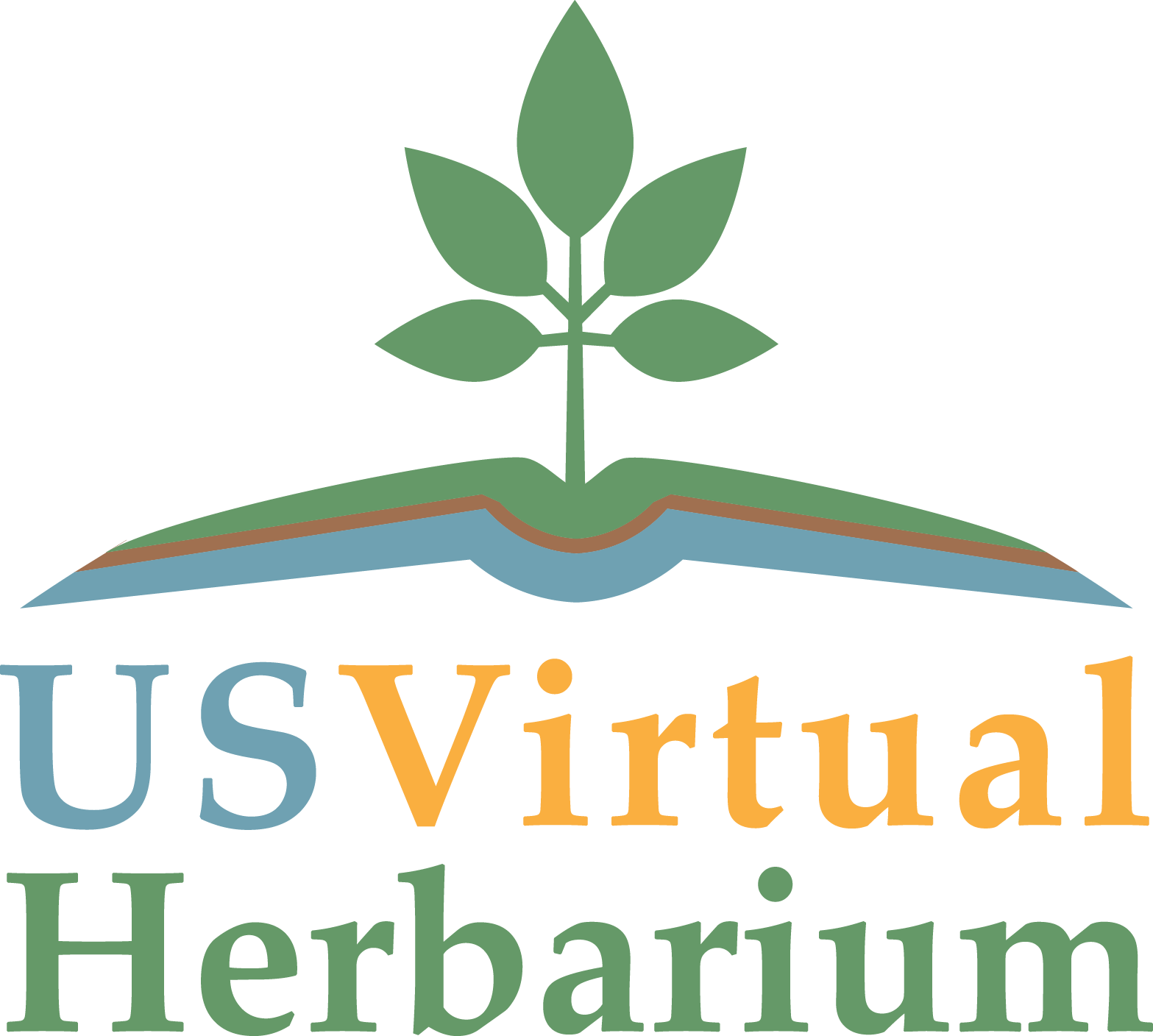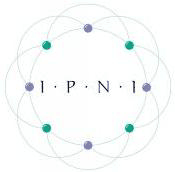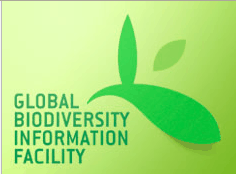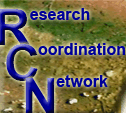|
|



















Sites with Nomenclatural Information
International Plant Nomenclatural Index IPNI: http://www.ipni.org/index.html
IPNI combines three indices of plant names into a searchable database. Searches can be done by taxon or by authority, including authority abbreviations. Citations for a scientific name provide a list of references. Each reference will include complete author details and the citation for where the taxon was published. These lists are not ranked for acceptance or validity. Searches by authority return the complete name, standard abbreviation, birth and death dates, and home country.
IPNI combines three indices of plant names into a searchable database. Searches can be done by taxon or by authority, including authority abbreviations. Citations for a scientific name provide a list of references. Each reference will include complete author details and the citation for where the taxon was published. These lists are not ranked for acceptance or validity. Searches by authority return the complete name, standard abbreviation, birth and death dates, and home country.
Tropicos: http://www.tropicos.org/
Tropicos is developed and maintained by the Missouri Botanical Garden. A multifaceted site, the data portal features of Tropicos are covered separately in Global Data Portals. In addition to searchable specimen information, Tropicos is also useful as a source of nomenclatural information. Searching for a taxon returns a list of names containing that taxon (so if you search for a species Tropicos will return a list that also includes all of the subspecies). Unlike INPI, Tropicos also includes nomenclatural evaluations, and will mark names in the list as legitimate, illegitimate, invalid, nom. rej., or nom. cons. Clicking on a taxon produces the authorities, publication source, birth and death dates, and home country, as well as basionyms.
Tropicos is developed and maintained by the Missouri Botanical Garden. A multifaceted site, the data portal features of Tropicos are covered separately in Global Data Portals. In addition to searchable specimen information, Tropicos is also useful as a source of nomenclatural information. Searching for a taxon returns a list of names containing that taxon (so if you search for a species Tropicos will return a list that also includes all of the subspecies). Unlike INPI, Tropicos also includes nomenclatural evaluations, and will mark names in the list as legitimate, illegitimate, invalid, nom. rej., or nom. cons. Clicking on a taxon produces the authorities, publication source, birth and death dates, and home country, as well as basionyms.
The USDA Plants database: http://plants.usda.gov/java/ attempts to cover all vascular plant species found
in North America. More aggressive than Tropicos, this site clearly chooses a preferred name for each taxon,
and lists other taxa as synonyms. The correct authority is given in abbreviated form. The taxon namepage
also includes a distribution map that can be expanded to show counties of distribution within a state, and
images of the taxon.
The Taxonomic Name Resolution Service:
http://tnrs.iplantcollaborative.org/
eFloras: http://www.efloras.org/index.aspx
eFloras is a comprehensive on-line compilation of digitized floras of the world. Search for a taxon, and it will returns a floristic treatment of the taxon from one of the available floras. Complete citation, species description, a distribution map, and links to other relevant sites are all displayed.
eFloras is a comprehensive on-line compilation of digitized floras of the world. Search for a taxon, and it will returns a floristic treatment of the taxon from one of the available floras. Complete citation, species description, a distribution map, and links to other relevant sites are all displayed.
Sites with Herbarium Data Tools:
The Index Herbariorum: http://sciweb.nybg.org/science2/IndexHerbariorum.asp
The Index is a compilation of herbaria worldwide. Continuously updated, the Index is searchable by a variety of fields (institution, location, personnel name, etc.). Registered herbaria are given a unique letter code, and curator, contact information, herbarium website, and basic information about the collection are presented. The Index is also a good way to search for people if you don't know which institution they are associated with.
The Index is a compilation of herbaria worldwide. Continuously updated, the Index is searchable by a variety of fields (institution, location, personnel name, etc.). Registered herbaria are given a unique letter code, and curator, contact information, herbarium website, and basic information about the collection are presented. The Index is also a good way to search for people if you don't know which institution they are associated with.
Sites with Floristic Information
The Biodiversity Collection Index: http://www.biodiversitycollectionsindex.org/static/index.html
Similar to the Index Herbariorum, this index catalogs institutions around the world. There are plans for it to merge with the Index Herbariorum.
Similar to the Index Herbariorum, this index catalogs institutions around the world. There are plans for it to merge with the Index Herbariorum.
GEOLocate: http://www.museum.tulane.edu/geolocate/
GEOLocate is a set of software tools that can be used to locate and calculate GPS coordinates for any particular spot in the United States. A standalone desktop client can be downloaded, and GEOLocate has also been incorporated into Specify. A very powerful useful tool.
GEOLocate is a set of software tools that can be used to locate and calculate GPS coordinates for any particular spot in the United States. A standalone desktop client can be downloaded, and GEOLocate has also been incorporated into Specify. A very powerful useful tool.
Sites with Institutional Information
Specify: http://specifysoftware.org/
Specify is an NSF-supported free software package for managing a database of museum specimens. There is considerable help available to troubleshoot issues, which is important because it is not a simple package to learn or employ. However, a number of herbaria have chosen to manage their data with Specify.
Specify is an NSF-supported free software package for managing a database of museum specimens. There is considerable help available to troubleshoot issues, which is important because it is not a simple package to learn or employ. However, a number of herbaria have chosen to manage their data with Specify.
Harvard Index of Botanists: http://kiki.huh.harvard.edu/databases/
Enter the name of a collector, curator, or identifier. A list of matching names will be produced. Pick a name from the list to learn more about the individual.
Enter the name of a collector, curator, or identifier. A list of matching names will be produced. Pick a name from the list to learn more about the individual.
A product of the iPlant collaboration, TNRS 3.0 attempts to resolve issues associated with nomenclature. A
taxon can be searched, and TNRS will consult the Global Composites Collection, Tropicos, and the USDA
plants database, and return an evaluation of the authority associated with the taxon. Authorities may be
accepted, rejected, or a list of possible correct citations will be presented. One of the nice features of TNRS
is that it can be operated in batch mode. Thousands of taxa can be submitted in batch mode, and a file will
be built with the opinions of TNRS
This is an exciting new site, but the results should not be blindly accepted. For a full review of TNRS, see the upcoming issue of the Wired Herbarium in the publication list.
This is an exciting new site, but the results should not be blindly accepted. For a full review of TNRS, see the upcoming issue of the Wired Herbarium in the publication list.
Sites with Information about Botanists:
Symbiota: http://symbiota.org/tiki/tiki-index.php
Botanicus: http://www.botanicus.org/
A freely accessible digital library of historical botanical literature, provided by the Missouri Botanical Garden. Enter a publication, and the search engine will attempt to find it. Downloadable pdfs can be retrieved.
A freely accessible digital library of historical botanical literature, provided by the Missouri Botanical Garden. Enter a publication, and the search engine will attempt to find it. Downloadable pdfs can be retrieved.
Symbiota is a software package designed to combine specimen data from multiple institutions into one
web-based data portal.
Harvard Index of Publications: http://kiki.huh.harvard.edu/databases/publication_index.html
Another site where publication information can be obtained.
Another site where publication information can be obtained.
Professional Organizations:
Sites with Information about Publications:
Global Biodiversity Information Facililty GBIF: http://www.gbif.org/informatics/infrastructure/
The Informatics subunit describes a variety of tools and resources, especially the IPT or Integrated Publishing Toolkit, software designed to manage a data portal.
The Informatics subunit describes a variety of tools and resources, especially the IPT or Integrated Publishing Toolkit, software designed to manage a data portal.
Biodiversity Heritage Library: http://www.biodiversitylibrary.org
The Biodiversity Heritage Library makes legacy natural history and botanical publications available for download online. Search for a text and download a .pdf or image.
The Biodiversity Heritage Library makes legacy natural history and botanical publications available for download online. Search for a text and download a .pdf or image.
Resource Conservation Network RCN:
http://www.rcn.montana.edu/resources/tools/coordinates.aspx
This webpage is a converter from one method of measuring GPS coordinates to any other. It only works for the northern hemisphere.
This webpage is a converter from one method of measuring GPS coordinates to any other. It only works for the northern hemisphere.
Society for Herbarium Curators: http://www.herbariumcurators.org/
The Society for Herbarium Curators seeks to bring herbarium curators together. Offerings include The Vasculum, a semiannual newsletter, and the Curator's Toolbox, with currently 20 different descriptions of "how-to" do various curatorial activities.
The Society for Herbarium Curators seeks to bring herbarium curators together. Offerings include The Vasculum, a semiannual newsletter, and the Curator's Toolbox, with currently 20 different descriptions of "how-to" do various curatorial activities.
The Engineering Toolbox:
http://www.engineeringtoolbox.com/utm-latitude-longitude-d_1370.html
This website is a global converter from UTM to latitude / longitutde GPS data.
This website is a global converter from UTM to latitude / longitutde GPS data.
The PlantList: http://www.theplantlist.org/
The PlantList is a list of all known plant species. Accepted names, synonyms, and unresolved nomenclature are all indicated. Search for a taxon to learn more about it.
The PlantList is a list of all known plant species. Accepted names, synonyms, and unresolved nomenclature are all indicated. Search for a taxon to learn more about it.
Brahms Botanical Research and Herbarium
Management Software:
http://herbaria.plants.ox.ac.uk/bol/
Brahms is another database package for specimen data management.
Brahms is another database package for specimen data management.
The U.S. Virtual Herbarium Project: digitization resources.
A guide to tools and resources for herbarium curation on the web.
A guide to tools and resources for herbarium curation on the web.
The U.S. Virtual Herbarium Project:
Bringing all herbaria into a digital network and demonstrating the value of shared information.
Bringing all herbaria into a digital network and demonstrating the value of shared information.
Mycobank: http://www.mycobank.org/
Mycobank documents mycological nomenclatural novelties (new names and combinations) and associated data.
Mycobank documents mycological nomenclatural novelties (new names and combinations) and associated data.
Index Fungorum: http://www.indexfungorum.org/
is a searchable database of fungal nomenclatural, a fungus bibliography, and a fungal dictionary.
is a searchable database of fungal nomenclatural, a fungus bibliography, and a fungal dictionary.
Index Nominum Algarum: http://ucjeps.berkeley.edu/INA.html
Purely nomenclatural; taxa are placed in the family used by the author of the name. Most of the records are linked to a scanned image of a file card containing typed information.
Purely nomenclatural; taxa are placed in the family used by the author of the name. Most of the records are linked to a scanned image of a file card containing typed information.
Algaebase: http://www.algaebase.org/search/species/
Search: enter a taxon, and a list of responses is shown. Search records are a mix of specimens and nomenclatural references, and an option to map by country.
Search: enter a taxon, and a list of responses is shown. Search records are a mix of specimens and nomenclatural references, and an option to map by country.






















